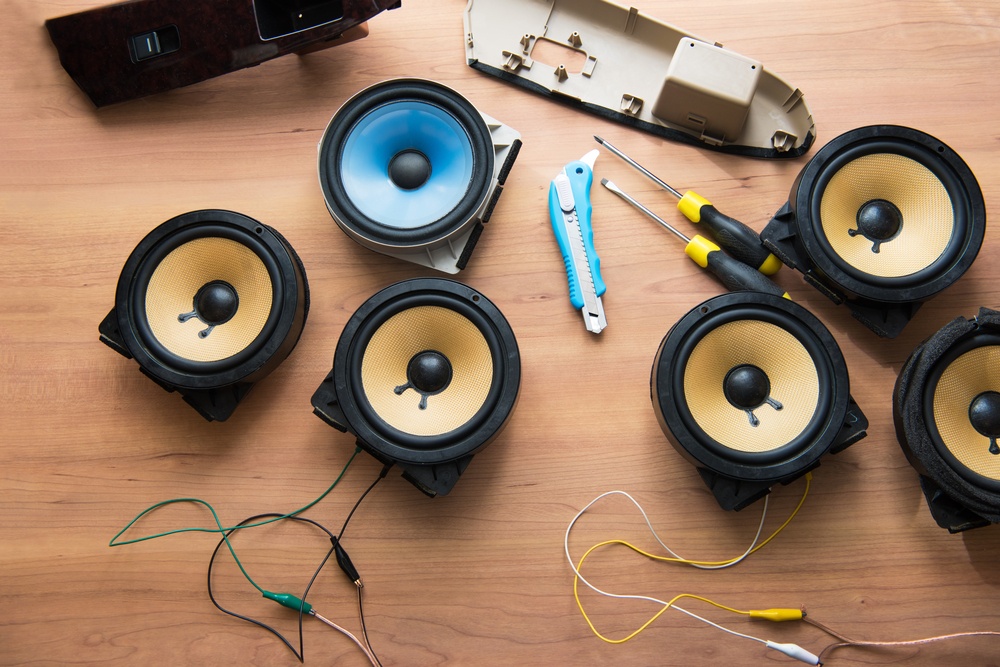Speaker cables are wires that are used for electrical connections of your speakers to amplifier sources. Speaker wires have three main electrical properties: one is resistance, another is capacitance, and lastly, inductance. Resistance is usually an essential property to look for. Wires with low resistance normally allow more source’s power to pass through them into speaker coil; this means that more sound and more power.
From music lovers to public speakers, having correctly working speakers is essential. Since the majority of speakers do not come with wires, speaker wire then remains to be the most common cause of speaker problems. So, what are the common symptoms of a faulty speaker wire?
Factors that affect the wire’s resistance
- Wire material
- Bi-wires or single wires
- Terminations
- Wire length
SYMPTOMS OF A FAULTY SPEAKER WIRES
Mostly, systems that have speakers that are spreading for long distances, wires that are broken, or speakers that are poorly connected can often occur when lengths and lengths of wire are in use. Fixing these types of problems may not be so difficult, but it is usually a challenge to identify the problem. A few symptoms can help in identifying a faulty or bad speaker wire.
1. Speakers suddenly stop working
There is nothing more frustrating than trying to relax and listen to some good music only to find out your speaker is not working. This is the main symptom of having bad speaker wires.
2. Speakers only producing a buzzing sound
This symptom mostly proves that your speakers are not the cause; rather, its wires are. The speakers producing a buzzing sound only means they are operational, and the problem is usually in the connection of the cables.
What are the causes of having problems with your speaker and wiring?
1. Connections
Connectors and wires often become loose or disconnected with time. The connection can also be the problem with your speakers due to issues with the wires themselves. Inspecting the whole area is advised to know the areas to be connected properly.
2. Speakers themselves
Having your speakers go silent can also be caused if your speakers have brown. This is a severe problem since the only solution is buying new speakers since they are not repairable.
3. Grounding
In this case, the grounding wires might be the cause if they are loose or disconnected. It is advisable to secure these wires more firmly, or you can opt to relocate them to a more stable location.
4. Amplifiers
Your speakers can be having issues if the setting of your amp is incorrect. It is also advisable to check your connection.
Multimeter
A multimeter is the best equipment when testing speaker wires. Multimeters are of two main types; the digital and analog multimeter.
It is preferable to use a digital multimeter for its added advantages. Digital multimeters are the clamp digital multimeter and the fluke digital multimeter.
The Fluke digital multimeter is the best of the entire multimeter. This is because it is protected from transient voltage. This fluke multimeter select ranges automatically to give the best measurement.
Test Your Speaker Wiring with a Multimeter
Using a multimeter, you can troubleshoot your speaker wire. Below is the process to follow.
1. Turning off All your Equipment
This process is essential to ensure safety as you work on electronics. It is also essential to turn off all your equipment to prevent damage or short to them. This is advisable so that you don’t get to add multiple issues from just a simple wire checkup for choosing not to turn you’re your power.
2. Removing all your Speaker Wires
To be able to check the speaker wires, you will need to remove them from the speaker box. This process should be done for both negative and positive wires. You need to press both clips, which are holding the wire in. You can also twist counterclockwise the connectors if it is your setup.
The next thing to do in this step is removing your speaker wires from your stereo receiver. If your lock mechanism is engaged, do not try removing your speaker wire. Using an electric screwdriver twist its lock so that you can remove your wires, or you can just press both clips together.
3. Connecting the Wires
After removing the wiring from your speaker and your stereo, the next thing you will do is circuit creating. You need to twist the separate two cables together on one end. Now having made a closed circuit, it will help in having a perfect continuity testing.
Note, while twisting, don’t twist them together too tightly. This is because you will have great trouble trying to separate them later and can eventually lead to damage.
4. Setting up your Multimeter
In this step, you need to turn on your multimeter and set the dial to Ohms selection. This Ohms option is used when testing resistance and is mostly used in speaker wires. Before you start testing your speakers, it is essential to ensure that your multimeter is working correctly. Start by touching the red probe and black probe to each other.
The multimeter’s reading should be no resistance or 0 Ohms. This type of reading indicates everything within your multimeter is working correctly. If you read any other reading other than 0 Ohms, it means that there is an issue with your multimeter. This will require you to invest in buying a new multimeter before continuing forward.
5. Testing Your Wire
This process involves touching the two multimeters probes to your bare speaker wires in the circuit. This should be done on both wires that you never twist together. If the multimeter reads infinite resistance, this means that there is a cut or break somewhere in the wire. This requires you to replace your speaker wire.
If your cable displays a small resistance amount, then this means that everything is working correctly in the wire; thus, you got other issues of the sound.

